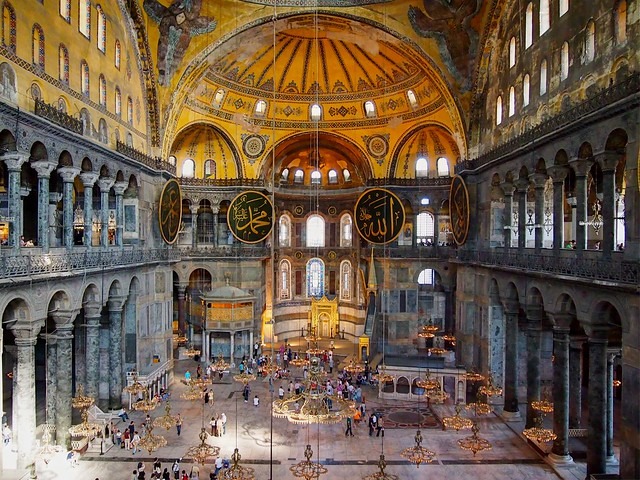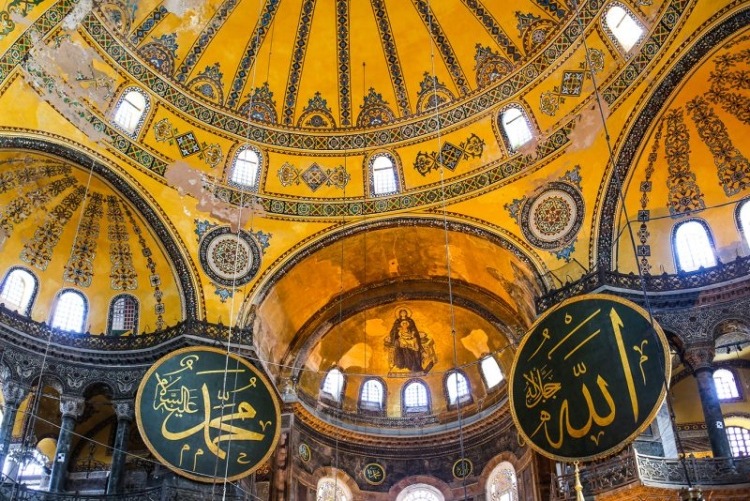Known as Ayasufiya in Turkish, Hagia Sophia was originally built as a cathedral in Constantinople (present-day Istanbul), in 537, by Byzantine emperor Justinian. For more than a millennium, it was the largest church in the Christian world.
Under Ottoman rule in 1453, the cathedral was converted into a mosque by Ottoman Sultan Mehmed II. Four minarets and Arabic calligraphy were added, and some Christian icons and mosaics were covered. The greatest Ottoman architect at the time, Mimar Sinan worked on adding Islamic features to the building, such as minarets and chandeliers.
Years later, when the Ottoman rule declined in the early 20th century, it was turned into a museum by Turkey’s first President, Mustafa Kemal Ataturk, in efforts to modernize and secularize the country.
Labelled by some as the eighth wonder of the world, this wonderful historic masterpiece has, for years, welcomed millions of visitors from every part of the world, including religious and political leaders, as well as famous public figures and tourists. It is considered Turkey’s most popular tourist spot, attracting over 3.7 million visitors annually.
Recently, under Turkey’s current president’s rule, Recep Tayyip Erdogan, Hagia Sophia was converted back into a mosque. As a result, UNESCO announced that its World Heritage Committee would now review the monument’s status, which could present a big financial blow to Turkey.





